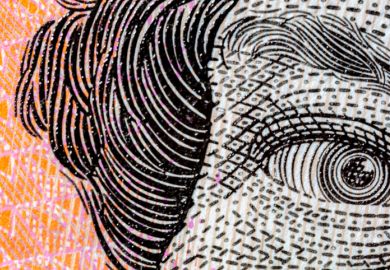The emotional dedication of this book on the corporate support of culture - "For my brother, Chin-ho, who did not live to read this, and my mother, who is not able to read this: with love" - and the endearing admission of the author, Chin-tao Wu, about her difficulty in being taken at face value in analysing the dynamics of a culture largely foreign to her, set me up for an intellectual trap. Indeed, I was fully prepared for the task of being patronisingly indulgent of her misunderstandings of western culture and perhaps about her degree of naivety about corporate life.
However, just a few pages in I realised that no indulgence was needed and I could be as critical as I wished. Wu is a first-class researcher, and she has done a meticulous, painstaking and outstanding research and documentation job. No allowance needs to be made. With the exception perhaps of one or two young women from Vienna, who come close to her in knowledge and have become practitioners in fundraising, she has the best knowledge of this field of anyone I know.
So I feel free to criticise, starting with the title. The subtitle, Corporate Art Intervention since the 1980s, is an accurate reflection of the main content of the book. But the main title is not. Could it have been suggested by someone involved with supervising her PhD thesis - the basis of this work - or by the publisher?
Culture has not been privatised, in the sense of privatising a company by transferring its ownership from the public sector into the hands of private individuals by way of a share issue. The funding of culture has, instead, been largely transferred from public taxation to corporate budgets. There is a big distinction between the two. Indeed, the funding of the arts by private individuals forms only a relatively minor part of the author's research.
My second main criticism is the author's borrowing of other people's thought frameworks: Pierre Bourdieu's concept of cultural capital, Weber's notion of the status group and the contemporary writings of the American sociologist Paul Di Maggio. This has two disadvantages: first it deprives us of Wu's own original analysis, which I suspect would have been much more valuable than a re-heated di Maggio pizza, second it means that the reader has to get to page 268 before reaching Wu's most insightful and most important conclusion: "The corporate ownership of contemporary art has thus not only affected the reception and interpretation of art works, but actually contributed to redefining and altering the relation between patrons and artists."
My third and final criticism concerns her categorisation, in her concluding chapter, of the Sainsbury family's patronage. I quote: "Nowhere is the combination of individual fortune and corporate wealth more powerful than in the name of Sainsbury's." This sentence implies a lot, says nothing and is potentially very ungenerous towards a family whose unselfish generosity to many charities, and the world of arts in particular, few would challenge.
It is particularly ungenerous to place such an unspoken and undocumented criticism in the same chapter as the author's treatment of the Saatchis, whom she introduces early on in the book as "apparently benefiting from inside informationI (in) the case of Malcolm Morley". Whatever the judgement on the latter pair, the comparison with the Sainsburys seems unwarranted.
Now to the main contentions of the book. The author dates the escalation of corporate art intervention to the Reagan and Thatcher decade of the 1980s. Rightly, however, she points the finger at David Rockefeller as their precursor. He started the corporate art collection of the Chase Manhattan Bank in 1959. "Many critics see this as a decisive turning point in the history of corporate art."
I remember well, as a young banker in 1972, waiting with some concern to be interrogated by Rockefeller on banking matters. I never did find out whether he was a great banker, but he certainly gave me a lesson on how to hang paintings, which I still recall. Rockefeller and art were a marriage made in heaven. Indeed, whenever the Chase Manhattan Bank encountered some turbulence, it was a standard insider joke that the bank's art collection was worth more than its capitalisation.
What he and others like him did with their discriminating collecting, was first and foremost to increase the income and quality of life of some living artists to a point not experienced since the Italian Renaissance or the Dutch golden age. Whether hungry and angry artists produce better art is something that neither Wu nor I want to speculate on.
Only a part of corporate funding for the arts ends up in the building of large, and hopefully artistically, worthwhile collections. The bulk goes instead in the form of charitable donations and/or sponsorships that support capital investments needed by public structures as well as artistic projects, whether in the visual or the performing arts or in the new widening promised land between the two.
The book correctly points out the shrinking gap in fiscal treatment between corporate donations and sponsorships, as well as the interconnectivity and mutual reinforcement between the two. Wu indicates the permutations available and the leverage in terms of mutual brand reinforcement, as well as the added potential offered by internet links.
Like most corporate executives, I have played on both sides of the fence. As a corporate sponsor, I displayed all the behavioural patterns that Wu describes. I championed my own pet projects (the launch of two international competitions for visual arts students); I supported colleagues' projects (from art exhibitions of world standard to heritage projects to youth orchestras); I provided corporate funds for capital and performance projects; and I loved doing it. I always looked for the appropriate level of intangible but measurable return on corporate money.
I never used inside art information for personal or corporate gain (naively, the thought never even occurred to me) and, contrary to Wu's thesis, I certainly never knowingly used my ability to spend to enhance my own social status: a concept that - as a born Italian - I regard with the cynicism one absorbs from a full ration of Cicero read early in life.
As a volunteer fundraiser, by contrast, lately for Shakespeare's Globe Theatre, among others, I have displayed the same enthusiastic, selfless, amateurish ineptitude as many other corporate executives; something that professional fundraisers tolerate with amused indulgence, just in case the amateur happens to be able to open the particular door that has remained closed for so long.
Such involvement, often in corporate time, of thousands and thousands of executives, has in my view done more for the democratisation of art than any amount of public money could have done. I realise I am risking a paradox here, but I believe this is true. Public money rarely goes to introduce art to the underclasses, it makes it accessible to those same middle classes from which many corporate executives come. Would they have taken a similar interest as private individuals? Probably not, because most of them had no private time and, up to the 1980s, probably not enough accumulated wealth either.
Wu does not end up condemning corporate art intervention. She stops short of that, only pointing out the changed framework, while explicitly criticising the conflicts of interest, and implicitly showing concern for the transfer and concentration of power within financial and corporate elites. She does not even necessarily propose renewed public funding as a better alternative. Indeed, she provides us with a superb, detailed diagnosis, but no therapy. This gap I feel obliged to fill, not by suggesting a therapy, but by proposing that none is needed.
Ideologically, I am all for the state reducing taxation and for corporations increasing dividends, so that private individuals can express their own free choices in art by buying what they like and by donating to or sponsoring what they think is worthwhile. This would be the real democratisation of the arts. Unfortunately, real life is not as simple as naked simplistic ideology.
In cultural sponsorship, unlike business, there is no real process of capital accumulation. On the contrary, the more physical capital you accumulate (theatres, museums and so on), the more ongoing liabilities you create without being able to rely on predictable paying demand (except at the most famous branded venues). Furthermore, risk-taking in art is not yet a sophisticated manageable process, as it is in business.
Perhaps things will change in the long term in such a way that the art consumer will be king. For the foreseeable future, however, I see the need for a combination of public, corporate and private funding for the arts as being the best bet for promoting their growth and for increased "democratic" access to them. If that also means temporary concentration of power and influence in corporate hands, and social advancement of senior corporate executives, so what? Everyone knows and marvels at Michelangelo; how many remember the name of the pope who commissioned the Sistine Chapel?
I loved reading this book. Once started I could not put it down, not only because I personally know many of the characters and situations described, but because Wu makes a potentially arid topic come alive. I think it should be compulsory reading for all those involved in corporate-sector donations and sponsorships, in marketing and in fundraising, as well as sociologists, politicians and architects and, last but not least, gallery directors, theatre and music directors, and the artists themselves.
Rudi Bogni is a former investment and private banker, currently a director and trustee of several corporations and foundations.
Privatising Culture: Corporate Art Intervention since the 1980s
Author - Chin-tao Wu
ISBN - 1 85984 613 0
Publisher - Verso
Price - £20.00
Pages - 392
Register to continue
Why register?
- Registration is free and only takes a moment
- Once registered, you can read 3 articles a month
- Sign up for our newsletter
Subscribe
Or subscribe for unlimited access to:
- Unlimited access to news, views, insights & reviews
- Digital editions
- Digital access to THE’s university and college rankings analysis
Already registered or a current subscriber? Login



